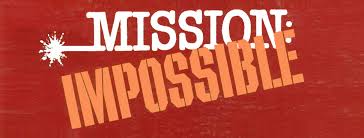Automated Accounts Receivable Programs: Cutting DSO by 30% in Six Months
In today’s economy, speed to cash is as important as speed to market. Companies that let receivables linger for 60, 75, or even 90 days are putting...
3 min read
August 3 2016
by
![]() Chris Cosgrove
Chris Cosgrove

Today’s Mission: Review the challenges of distributed vs. centralized capture and how it impacts the Accounts Payable process.
In today’s complex and changing business landscape, many organizations have to grapple with a variety of challenges that beset their Accounts Payable departments. One of these is the inundation of inbound invoices, especially paper invoices or paper-formatted invoices. While many electronic initiatives like EDI or e-invoicing have resulted in fewer paper-based invoices, the fact remains that virtually all businesses will have to process some subset of invoices that are paper-based or PDF (paper formatted electronic documents). The challenge of invoice processing is a subject that has been examined at length by us here, but you’ve got some options for how you handle the capture of these documents that really depend on how your business is structured.
For most small to mid-sized businesses, there is typically a centralized AP department and process whereby invoice scanning and capture become the norm because it fits hand in glove with your organizational structure. However, for larger businesses or those who are dispersed over a broader geographic area (ie. a multi-location retail format), the challenge of capture becomes more difficult. Not that the problem can’t be solved, as scanners are inexpensive, reliable, and easy to deploy. That is of course if you are of the mindset that we advocate. That is that invoices need to be converted instantly upon receipt of data. The data needs to be extracted via intelligent, advanced OCR (not archaic template-based OCR certainly, and optimally not by your AP or IT staff) in the cloud, which then gets cleansed dynamically with human operators to bring data levels to near perfect thresholds.
Now in terms of the document on-ramps, there are multiple approaches that would fit this scenario. For sure, numerous desktop or workgroup scanners could curb the paper by converting it to a digital image. Alternatively, a monitored, centralized PO box could be amenable unless preventing invoice flow to outlying locations is entirely out of the realm of possibility. Even leveraging mobile devices for image capture and PDF creation is a possibility in some cases and certainly, something that is easily deployable considering the proliferation of smartphones and tablets today. Anyway it takes, essentially, is the preferred method for routing invoices for capture, but you have isolated the method that is most suitable to your business considering volumes, workflow, and capital investment available. Two other options that would assist with the flow of invoices into AP whether centralized or distributed involve a dedicated, monitored email address to which vendors can submit their invoices for processing.
This however assumes that the invoice data contained on the surface level would be enough to auto-identify the key header data which would then enable workflow and processing automation. In other words, if invoices sent to outlying locations required manipulation of some sort before they are processed by the receiving personnel at the location, then it may be necessary to continue with the aforesaid distributed capture options. A final, higher-order option is the use of a vendor portal by which vendors could submit their invoices dynamically through a single/bulk upload process into the OCR and validation queue. So now that we’ve looked at the different cases for distributed capture, it makes sense to turn attention to the centralized capture.
Centralized capture, as we stated above is ideal for small to medium businesses and for large enterprise-level organizations that function in a shared services model. In this way, you can pool the hardware and processing components needed to streamline the document flow. We believe a still better way is to process documents dynamically through the cloud, so you don’t have to bring in big-ticket OCR technology (which has to be curated and managed extensively and is an expertise that is very nuanced and hard to find in the market) and have your people or hired people manage the data validation efforts. Besides pooling your personnel and hardware resources, in both approaches to alleviating invoice conversion efforts you’ll want to deploy dedicated email monitoring and a robust vendor portal. These efforts will directly contribute to reducing the number of invoices that have to be physically sorted and scanned.
Regardless of your situation and physical setup, getting invoices converted early in your payables process is the key to unlocking the automation puzzle. Of course, this assumes harnessing OCR and multiple means of automated validation, but the point is that if you’re pushing this method forward, you’re operating in accordance with best practices for handling invoices expeditiously.
Schedule a no-commitment demo with our team to explore how document automation can accelerate your accounts payable processes.

In today’s economy, speed to cash is as important as speed to market. Companies that let receivables linger for 60, 75, or even 90 days are putting...

Managing operational costs today often means balancing operational costs against tight margins, making it essential to join a group purchasing...